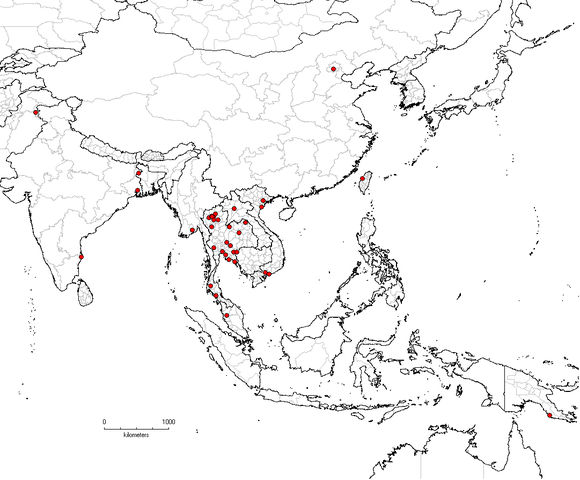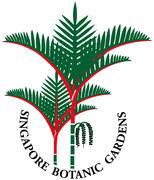Nomenclature
Ipomoea nil (L.) Roth, Catal. Bot. 1: 36. 1797.
Convolvulus nil L., Sp. Pl. ed. 2. 1: 219. 1762
C. hederaceus L.
I. nil (L.) Roth var. setosa (Blume) Boerlage
I. scabra Forssk.
I. setosa Blume
I. trichocalyx Steud.
I. vaniotiana H. Lév.
Pharbitis nil (L.) Choisy
Misapplied name: Ipomoea hederacea authors not Jacq.: e.g., Gagnep. & Courchet in Lecomte, Fl. Indo-Chine 4: 241. 1915.
Description
Fang R.C., G. Staples, et al. 1995. Convolvulaceae in P. Raven & C.Y. Wu (eds.) Flora of China 16: 271–325.
Cytology
Fang R.C., G. Staples, et al. 1995. Convolvulaceae in P. Raven & C.Y. Wu (eds.) Flora of China 16: 271–325.
Biogeography, Ecology and Natural History

Native of tropical America, now nearly circumtropical as a naturalized weed and cultivated ornamental; in Kashmir, Pakistan, Nepal, India, Sri Lanka, Myanmar, Thailand, China, New Guinea, Australia.
China: Thickets on mountain
slopes, waysides, fields, hedges; 0–1600 m. Cultivated or escaped.
Thailand: Open,
mixed deciduous forest, scrub jungle, fire-damaged, degraded hardwood forest
with much bamboo, as well as vacant lots, gardens, rubbish dumps, roadside, on
diverse soil types; altitude: 50–700 m.
Flowering: January, June, August–December; fruiting: January, June, August–December.
Fang R.C., G. Staples, et al. 1995. Convolvulaceae in P. Raven & C.Y. Wu (eds.) Flora of China 16: 271–325.
Staples, G. 2010. Convolvulaceae. Fl. Thailand 10(3): 330–468.
Other information
Ipomoea nil is a typical short-day plant, flowering when daylength decreases and nights are at their longest (October through December) in the northern hemisphere. The Japanese have developed an extraordinary array of cultivars by careful selection from the wild plants.
Authorship for webpage


Add new comment